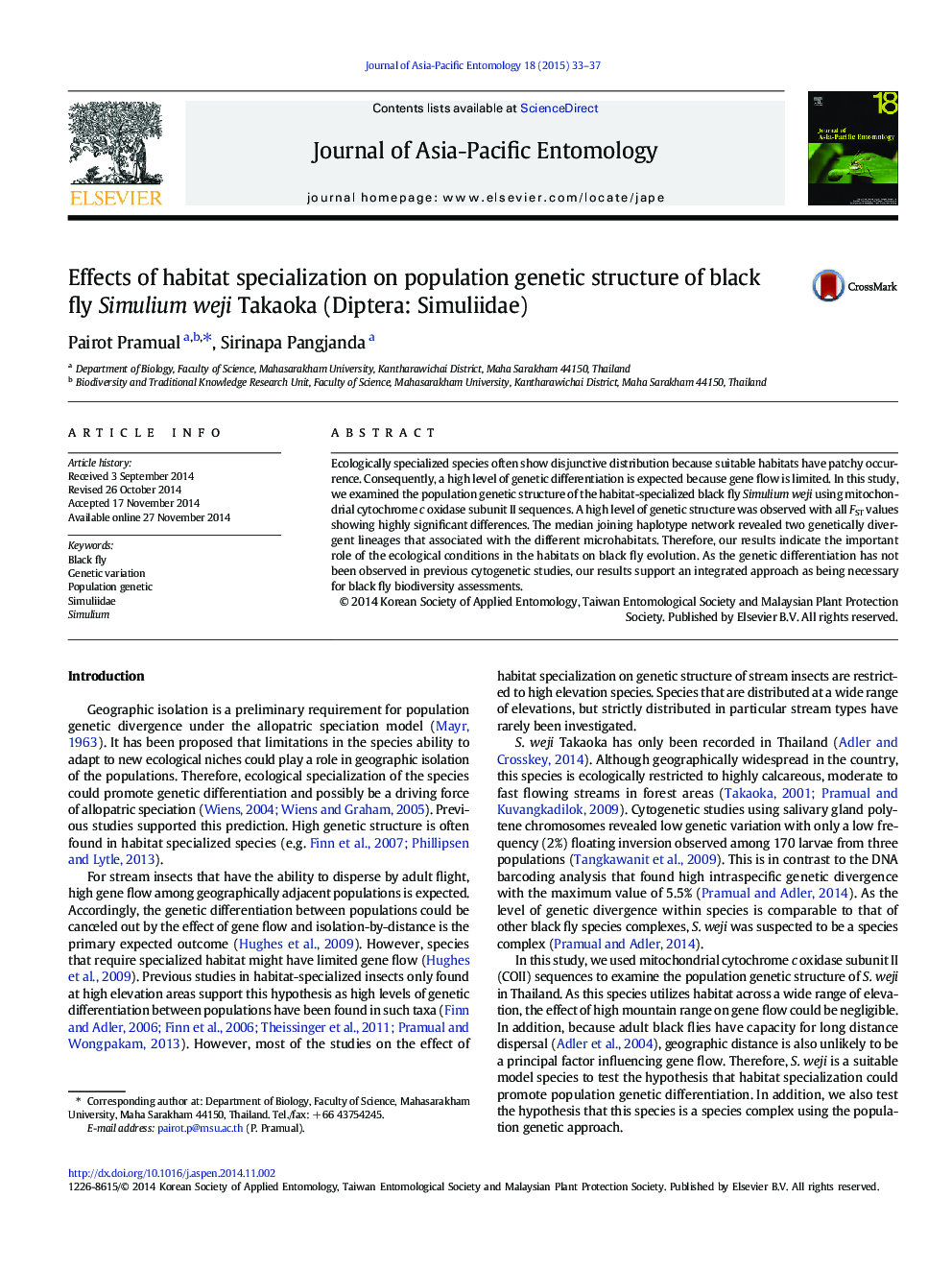| Article ID | Journal | Published Year | Pages | File Type |
|---|---|---|---|---|
| 4524618 | Journal of Asia-Pacific Entomology | 2015 | 5 Pages |
•Genetic structure and diversity of a habitat specialized black fly were investigated.•High levels of genetic differentiation between populations were found.•Two divergent lineages that associated with different microhabitats were revealed.
Ecologically specialized species often show disjunctive distribution because suitable habitats have patchy occurrence. Consequently, a high level of genetic differentiation is expected because gene flow is limited. In this study, we examined the population genetic structure of the habitat-specialized black fly Simulium weji using mitochondrial cytochrome c oxidase subunit II sequences. A high level of genetic structure was observed with all FST values showing highly significant differences. The median joining haplotype network revealed two genetically divergent lineages that associated with the different microhabitats. Therefore, our results indicate the important role of the ecological conditions in the habitats on black fly evolution. As the genetic differentiation has not been observed in previous cytogenetic studies, our results support an integrated approach as being necessary for black fly biodiversity assessments.
Graphical abstractFigure optionsDownload full-size imageDownload as PowerPoint slide
